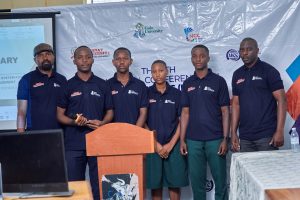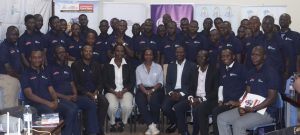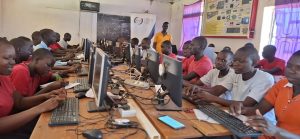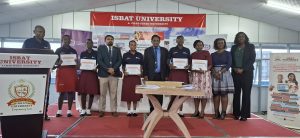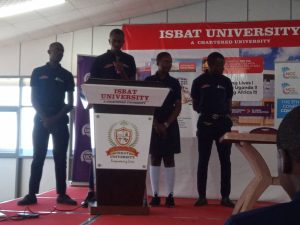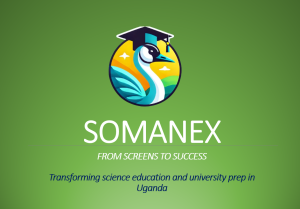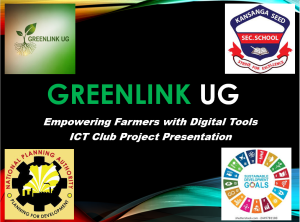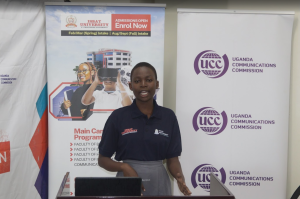Large Language Models (LLMs) – How ChatGPT and Similar Tools Work
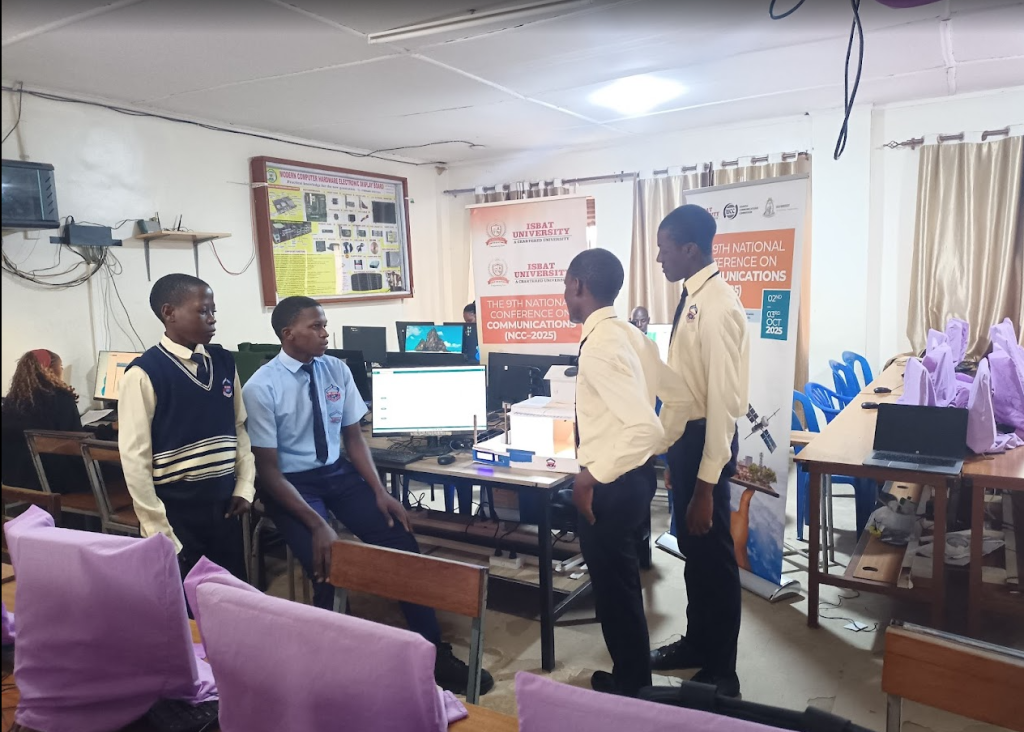
Artificial Intelligence (AI) is made up of many different branches, but one of the most revolutionary breakthroughs in recent years is the rise of Large Language Models (LLMs). These are special kinds of AI trained to understand, generate, and interact with human language. Tools such as ChatGPT, Google Bard, Claude, and LLaMA are examples of LLMs, and they are already shaping the way people learn, work, and communicate. For Uganda, where education, agriculture, health, and entrepreneurship drive development, LLMs provide powerful opportunities. To guide ICT Clubs, teachers, and young learners, it is important to understand what LLMs are, how they work, where they can be applied, and the challenges they bring.
1) What is a Large Language Model (LLM)?
A Large Language Model is an AI system that has been trained on billions of words taken from books, websites, newspapers, conversations, and other text-based sources. By reading all this data, the AI learns the patterns of human language. This means that when you type in a question, the LLM can generate a response that sounds natural, almost as if you are speaking to another person.
LLMs are not like ordinary software that follows a fixed set of instructions. Instead, they are predictive models. When you give them a prompt (for example, “Write an essay about climate change”), they generate text by predicting one word at a time based on what word is most likely to come next. This makes them extremely flexible. They can write poems, solve mathematics problems, summarize articles, or even generate computer code.
📌 Ugandan Example: Imagine a Luganda-English LLM that has been trained on school textbooks, government documents, and cultural stories. Such a model could help learners translate notes, prepare revision materials, or even explain science concepts in both English and Luganda. This would make education more inclusive and bridge the language gap many students face.
2) How Do LLMs Work?
The “magic” of LLMs lies in a type of deep learning architecture called the Transformer, first introduced by Google researchers in 2017. Transformers are very good at understanding context—meaning they can recognize not just the meaning of individual words, but also how those words relate to each other in long passages of text.
The process can be broken down into three main steps:
- Step 1: Data Collection – The model is trained on an enormous dataset, often containing trillions of words. This dataset may include books, Wikipedia pages, online conversations, and news articles. The wider the data, the more general knowledge the AI can learn.
- Step 2: Pattern Learning – Using neural networks, the AI begins to recognize patterns: how words form sentences, how grammar works, and even cultural styles of communication. For example, it can learn that “Kampala is the capital of …” should most likely be followed by “Uganda.”
- Step 3: Prediction and Response – When you give the AI a prompt, it does not “think” like a human. Instead, it predicts the next most likely word, then the next, and so on, until it forms a complete response. That’s why it can write long essays, generate dialogue, or even simulate conversations.
📌 Analogy for ICT Clubs: Imagine a student who has read millions of textbooks. If you ask them about photosynthesis, they might not have personally conducted an experiment, but because they have read so many examples, they can generate a detailed answer. This is how LLMs operate—based on massive exposure to text.
3) Examples of LLMs in Action
Large Language Models are not just research tools; they are practical and already changing how people live and work. Here are examples relevant to Ugandan schools and communities:
- Chatbots for Education: ICT Clubs could design chatbots powered by LLMs to help students revise for UNEB exams. For example, a chatbot could answer questions like “Explain the causes of soil erosion” or “What is the probability of getting a head when tossing a coin?”.
- Translation Services: Uganda is home to many languages (Luganda, Runyankole, Ateso, Luo, Lusoga, etc.). An LLM fine-tuned on these languages could automatically translate school materials or health messages. This would make important information accessible to rural communities.
- Content Creation for Teachers: Teachers can use LLMs to generate quizzes, lesson plans, or even comprehension passages for students. This saves preparation time while still allowing teachers to customize content.
- Community Applications: Farmers could interact with an LLM-powered SMS service that answers agricultural questions, like “How do I prevent banana bacterial wilt?” or “What are the best practices for maize storage?”
📌 Hands-on Task for ICT Clubs: Students can experiment with Teachable Machine or MachineLearningForKids, platforms that allow you to create simple AI models without needing advanced coding. These tools provide a stepping stone towards understanding how larger systems like ChatGPT are built.
4) Strengths of LLMs
LLMs come with several strengths that make them exciting tools for education and society:
- Versatility: They can generate essays, summarize long texts, compose poems, write computer code, or even simulate a debate. This makes them useful across many school subjects.
- Accessibility: They can simplify difficult concepts by rephrasing them in easier language. For example, an LLM can explain photosynthesis to Senior One students in very simple words, while giving a more advanced explanation to Senior Six.
- Productivity: They save time by drafting reports, letters, and lesson plans. A teacher who spends two hours preparing questions can now generate them instantly and focus more on teaching.
- Support for Local Languages: If trained with the right data, LLMs can help preserve and promote Ugandan languages. They could generate proverbs, cultural stories, or educational materials in Runyankole, Acholi, or Luganda, making learning more inclusive.
5) Limitations and Challenges
Despite their potential, LLMs are not perfect. They come with several challenges that ICT Clubs must critically evaluate:
- Bias in Data: Since LLMs are trained on human-written data, they may inherit stereotypes or discriminatory biases. For instance, if most of the training data associates doctors with men and nurses with women, the AI might reproduce these stereotypes in responses.
- Hallucinations: LLMs sometimes generate information that looks correct but is completely false. For example, an LLM might say “Lake Victoria is the largest lake in Africa by depth”, which is factually wrong because it is large by surface area, not depth.
- Data and Resource Needs: Training an LLM requires huge amounts of data and advanced computers that consume massive amounts of electricity. This makes it difficult for many African countries to build their own LLMs.
- Ethical Concerns: LLMs raise questions about plagiarism, misuse in exams, spreading misinformation, or replacing critical thinking. If students simply copy and paste AI answers without learning, their education is weakened.
6) Activity for ICT Clubs
To bring the concept to life, here are practical activities for ICT Club members:
- ChatGPT Trial: Use ChatGPT or another LLM to generate a poem about Lake Victoria. Then, cross-check the facts. Does it accurately describe the lake? Did it confuse details? This teaches critical evaluation.
- Mini Chatbot Project: Using platforms like Teachable Machine, build a simple chatbot that can answer 5–10 questions about Ugandan history.
- Group Debate: Discuss this question: “Should students in Uganda be allowed to use ChatGPT for exams and homework?” Split the club into two groups—one supporting and one opposing. This helps learners reflect on both the opportunities and dangers of LLMs.
Large Language Models represent one of the most powerful breakthroughs in Artificial Intelligence today. They offer new opportunities for learning, teaching, translation, and problem-solving in Uganda. At the same time, they also raise concerns about misinformation, bias, and over-reliance on technology. For ICT Clubs in Uganda, the goal should not simply be to use LLMs blindly but to use them responsibly—adapting them to local needs, integrating them into education, and ensuring they align with values of inclusion, sustainability, and critical thinking.

